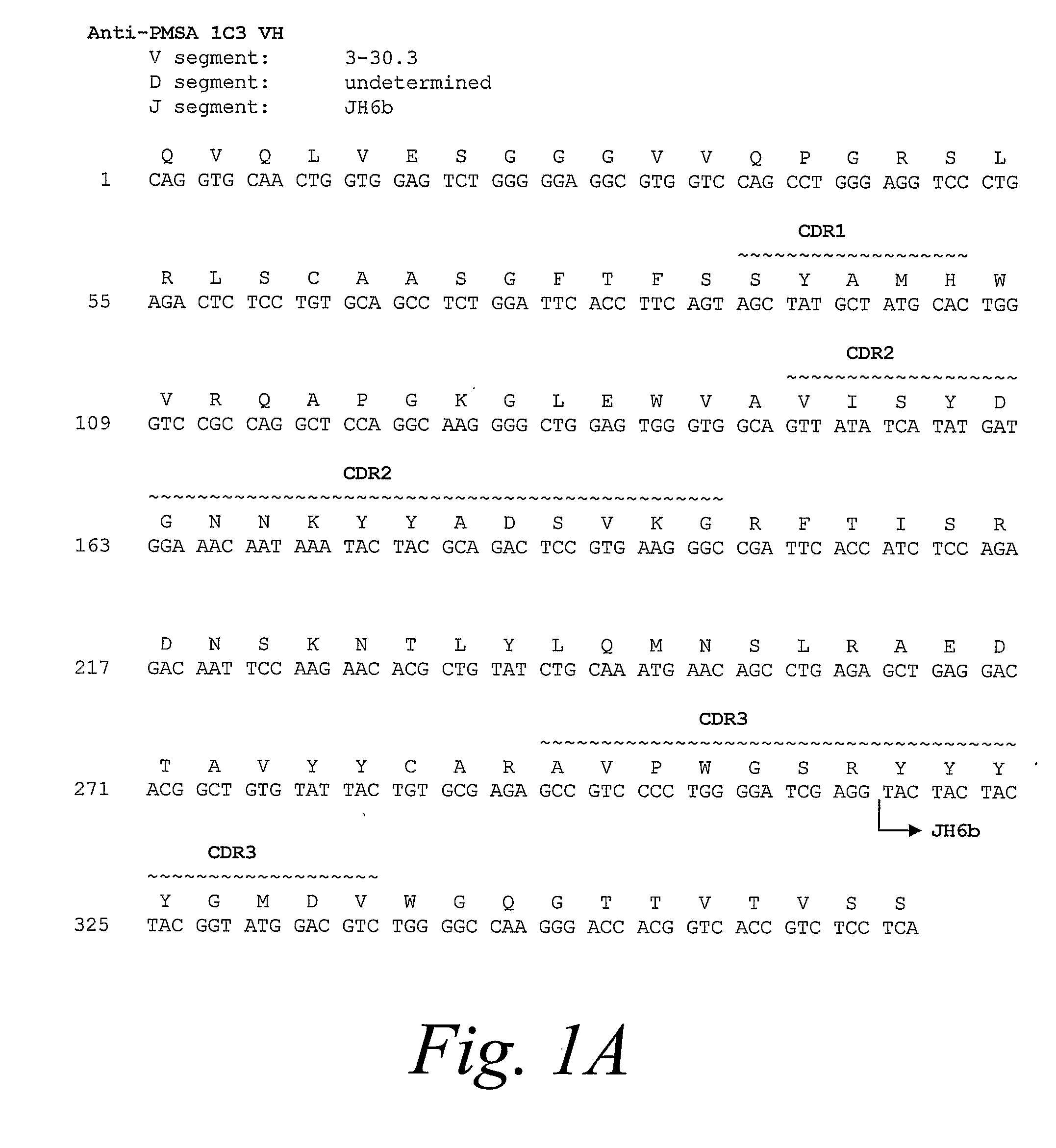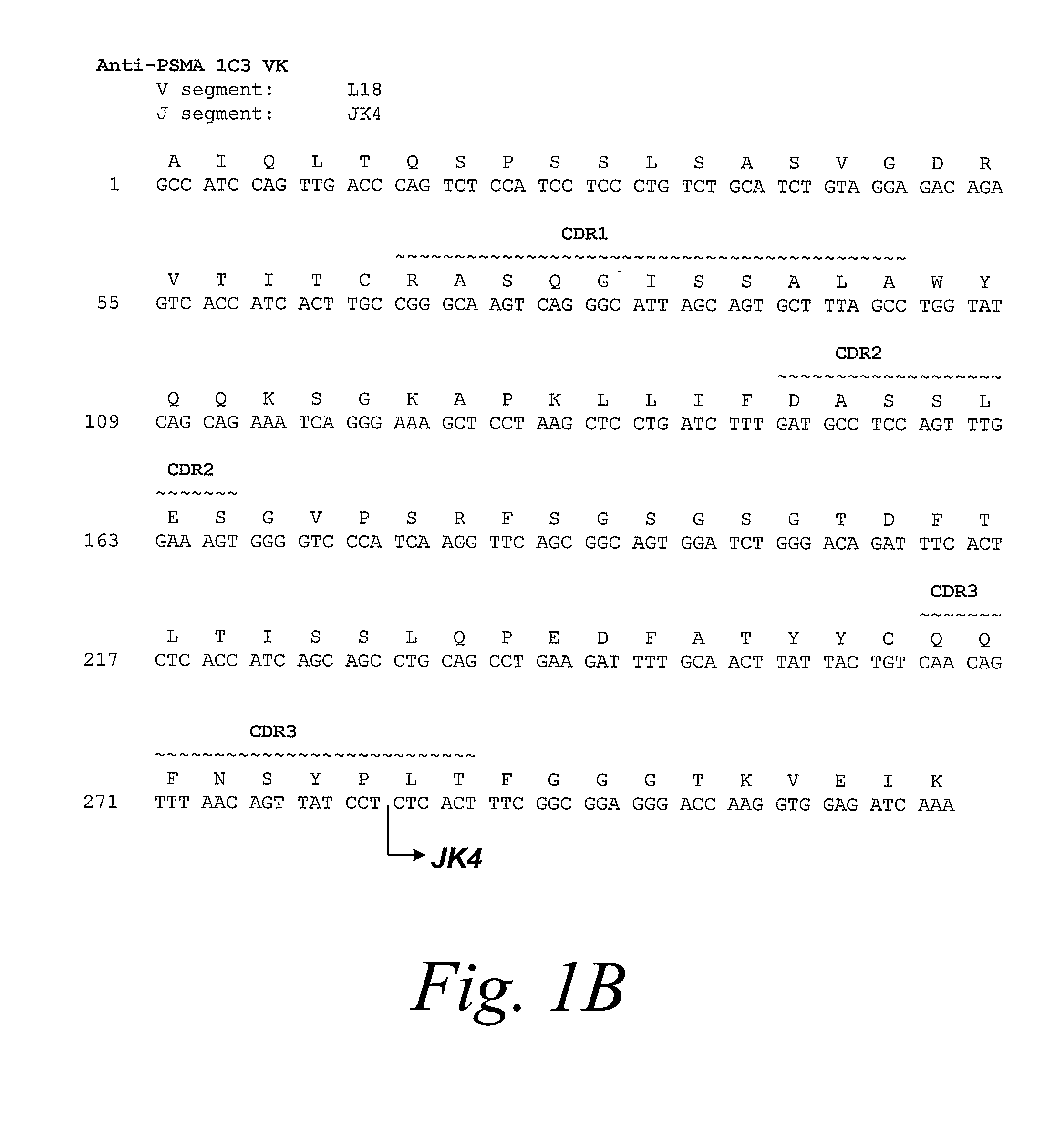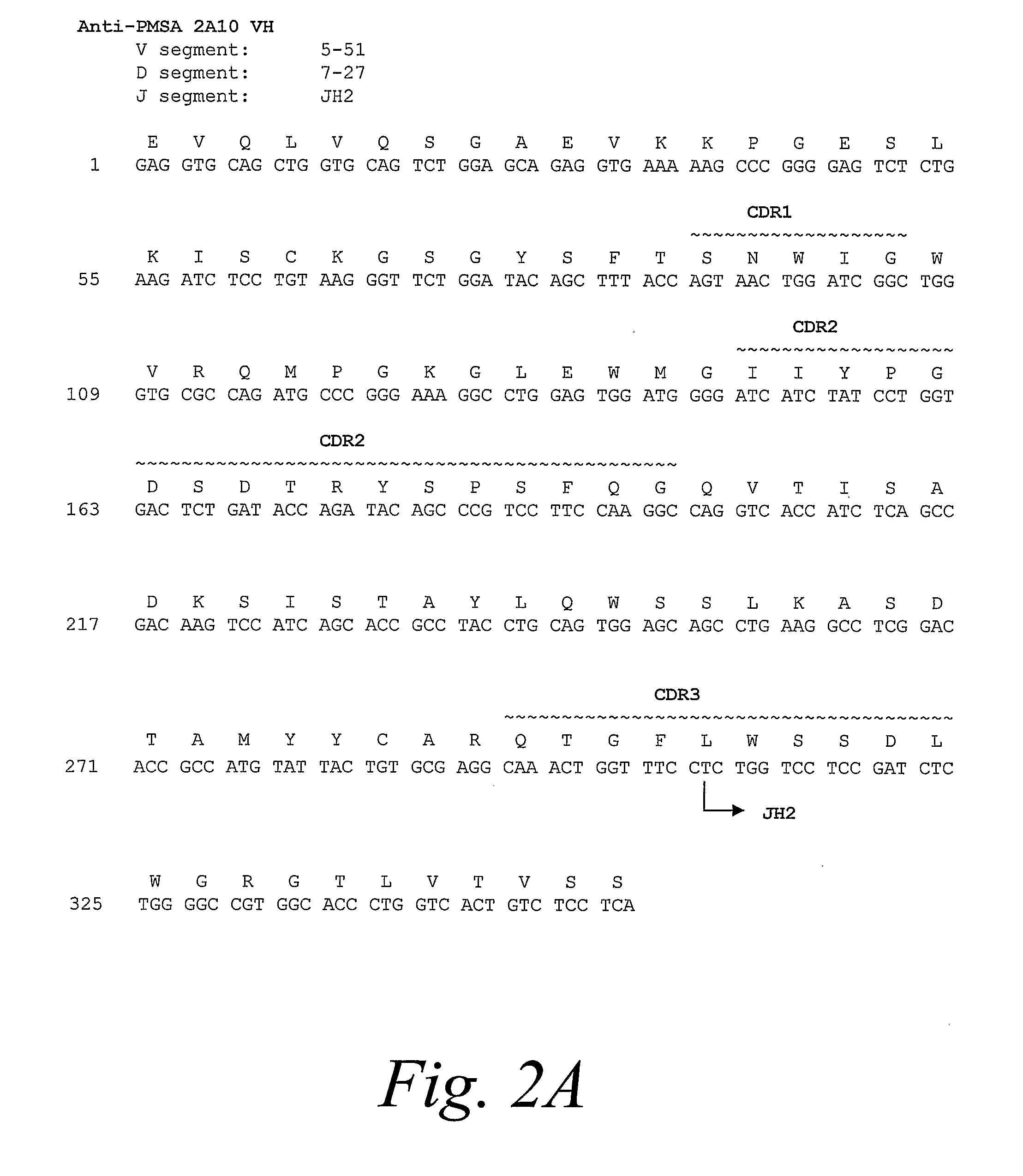Human Monoclonal Antibodies to Prostate Specific Membrane Antigen (PSMA)
a technology of specific membrane antigen and human monoclonal antibodies, which is applied in the field of human monoclonal antibodies to prostate specific membrane antigen (psma), can solve the problems of little effective treatment for metastatic prostate disease, psa cannot differentiate benign prostatic hyperplasia, and men's morbidity and mortality, etc., to inhibit or prevent tumor growth.
- Summary
- Abstract
- Description
- Claims
- Application Information
AI Technical Summary
Benefits of technology
Problems solved by technology
Method used
Image
Examples
example 1
Generation of Human Monoclonal Antibodies Against PSMA
[0350]Immunization protocols utilized as antigen cells of the PSMA expressing prostate cancer cell line LNCaP (ATCC CRL-1740).
Transgenic HuMab Mice
[0351]Fully human monoclonal antibodies to PSMA were prepared using the HCol2 strain of HuMab transgenic mice, which expresses human antibody genes. In this mouse strains, the endogenous mouse kappa light chain gene has been homozygously disrupted as described in Chen et al. (1993) EMBO J. 12:811-820 and the endogenous mouse heavy chain gene has been homozygously disrupted as described in Example 1 of PCT Publication WO 01 / 09187. Furthermore, this mouse strain carries a human kappa light chain transgene, KCo5, as described in Fishwild et al. (1996) Nature Biotechnology 14:845-851, and a human heavy chain transgene, HCo12, as described in Example 2 of PCT Publication WO 01 / 09187.
HuMab Immunizations:
[0352]To generate fully human monoclonal antibodies to PSMA, HuMab mice were immun...
example 2
Structural Characterization of Human Monoclonal Antibodies 1C3, 2A10, 2F5, and 2C6
[0357]The cDNA sequences encoding the heavy and light chain variable regions of the 1C3, 2A10, 2F5, and 2C6 monoclonal antibodies were obtained from the 1C3, 2A10, 2F5, and 2C6 hybridomas, respectively, using standard PCR techniques and were sequenced using standard DNA sequencing techniques.
[0358]The nucleotide and amino acid sequences of the heavy chain variable region of 1C3 are shown in FIG. 1A and in SEQ ID NO: 33 and 1, respectively.
[0359]The nucleotide and amino acid sequences of the light chain variable region of 1C3 are shown in FIG. 1B and in SEQ ID NO: 37 and 5, respectively.
[0360]Comparison of the 1C3 heavy chain immunoglobulin sequence to the known human germline immunoglobulin heavy chain sequences demonstrated that the 1C3 heavy chain utilizes a VH segment from human germline VH 3-30.3, an undetermined D segment, and a JH segment from human germline JH 6b. The alignment of the 1C3 VH seq...
example 3
Characterization of Binding Specificity of Anti-PSMA Human Monoclonal Antibodies
[0374]In this example, binding specificity was examined by flow cytometry on a prostate cancer cell line expressing PSMA and by ELISA using purified PSMA.
Binding Specificity by Flow Cytometry
[0375]The human PSMA-expressing prostate cancer cell line LNCaP was used to determine the specificity of anti-PSMA human monoclonal antibodies by flow cytometry. Binding of the 2F5, 2A10, and 2C6 anti-PSMA human monoclonal antibodies was assessed by incubating the LNCaP cells with the anti-PSMA human monoclonal antibodies at different concentrations. The cells were washed and binding was detected with a FITC-labeled anti-human IgG Ab. Flow cytometric analyses were performed using a FACScan flow cytometry (Becton Dickinson, San Jose, Calif.). The human anti-PSMA monoclonal antibody 7F12 (as described in PCT Publication WO 03 / 064606) was used as a positive control and a non-PSMA specific isotype control antibody was us...
PUM
| Property | Measurement | Unit |
|---|---|---|
| melting temperature | aaaaa | aaaaa |
| melting temperature | aaaaa | aaaaa |
| melting temperature | aaaaa | aaaaa |
Abstract
Description
Claims
Application Information
 Login to View More
Login to View More - R&D
- Intellectual Property
- Life Sciences
- Materials
- Tech Scout
- Unparalleled Data Quality
- Higher Quality Content
- 60% Fewer Hallucinations
Browse by: Latest US Patents, China's latest patents, Technical Efficacy Thesaurus, Application Domain, Technology Topic, Popular Technical Reports.
© 2025 PatSnap. All rights reserved.Legal|Privacy policy|Modern Slavery Act Transparency Statement|Sitemap|About US| Contact US: help@patsnap.com



